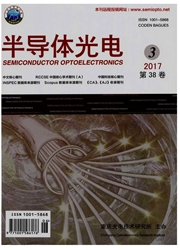

 中文摘要:
中文摘要:
碲锌镉(CdZnTe)半导体材料具有探测效率高、能量分辨率高和体积小重量轻的特点,是公认的最有希望成为下一代伽马射线探测装置的材料。然而,空穴俘获导致的电荷收集不完全限制了碲锌镉半导体探测器的性能。解决空穴俘获最有效的方法是单极型探测器技术。文章首先简要介绍半导体探测器中电荷收集的相关理论,然后重点阐述单极型探测器技术的实现方法,包括各种电极的结构设计原理、典型的探测器原型机介绍、性能特点及其结构设计的优缺点。最后简要展望了碲锌镉半导体探测器未来的发展方向。
 英文摘要:
英文摘要:
The CdZnTe semiconductor is now regarded as the most promising candidate for the next generation of gamma ray detectors, providing good stopping power for gamma rays, lightweight camera heads and improved energy resolution. However, the performance of CdZnTe detector is limited mainly by incomplete charge collection problem resulted from hole trapping. Single charge sensing technique is the most effective way for solving the trapping problem with some electronic correction methods. Firstly, the methods and techniques for improving the performance summarized covering the of CdZnT in detail. principles e detectors were reviewed. Then the single charge sensing techniques were CdZnTe detectors of different geometries were discussed particularly, of the electrode geometry design, some detector prototypes development and special correction techniques to improve the energy resolution. Finally, future deve of CdZnTe detector is also discussed.
 同期刊论文项目
同期刊论文项目
 同项目期刊论文
同项目期刊论文
 期刊信息
期刊信息
